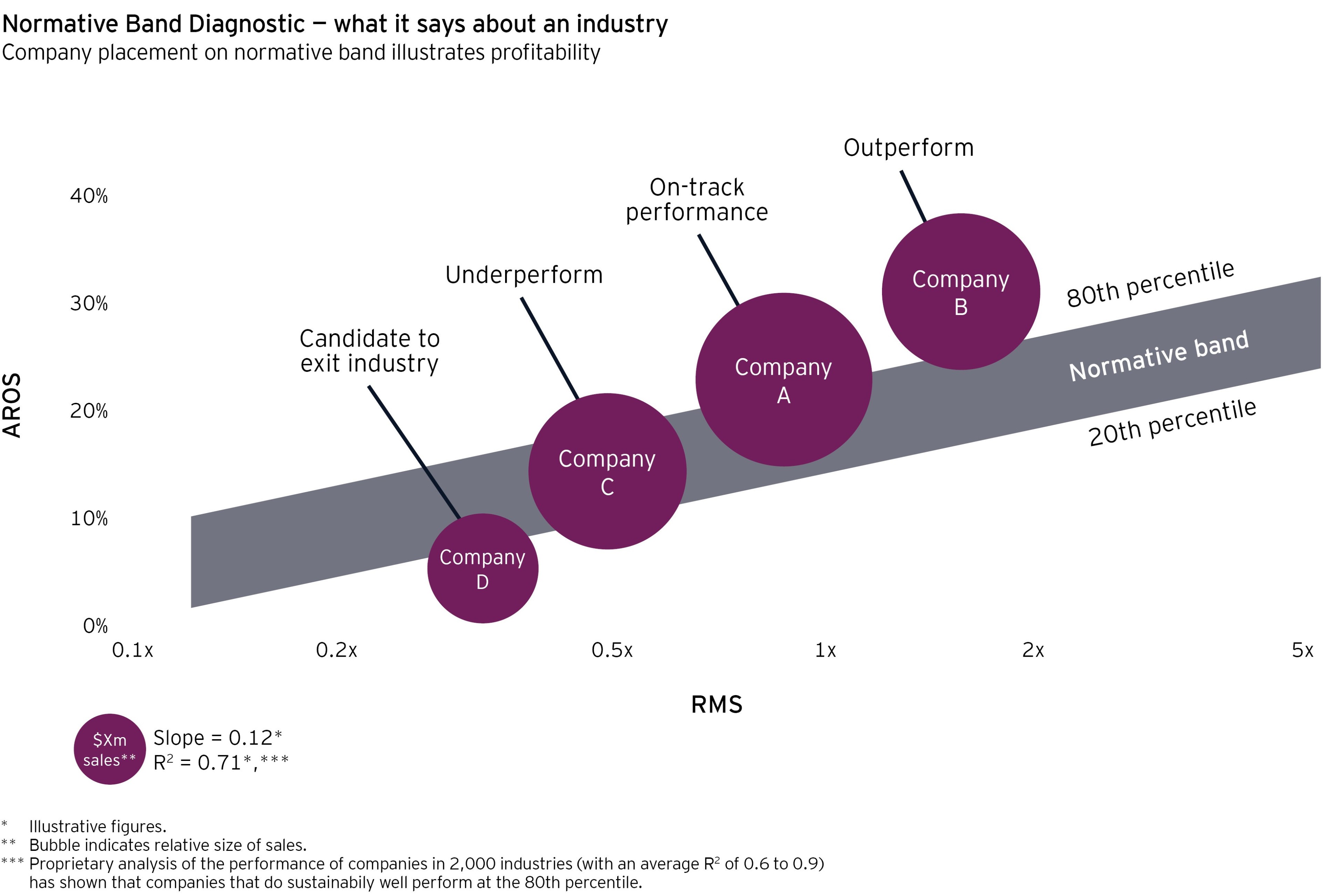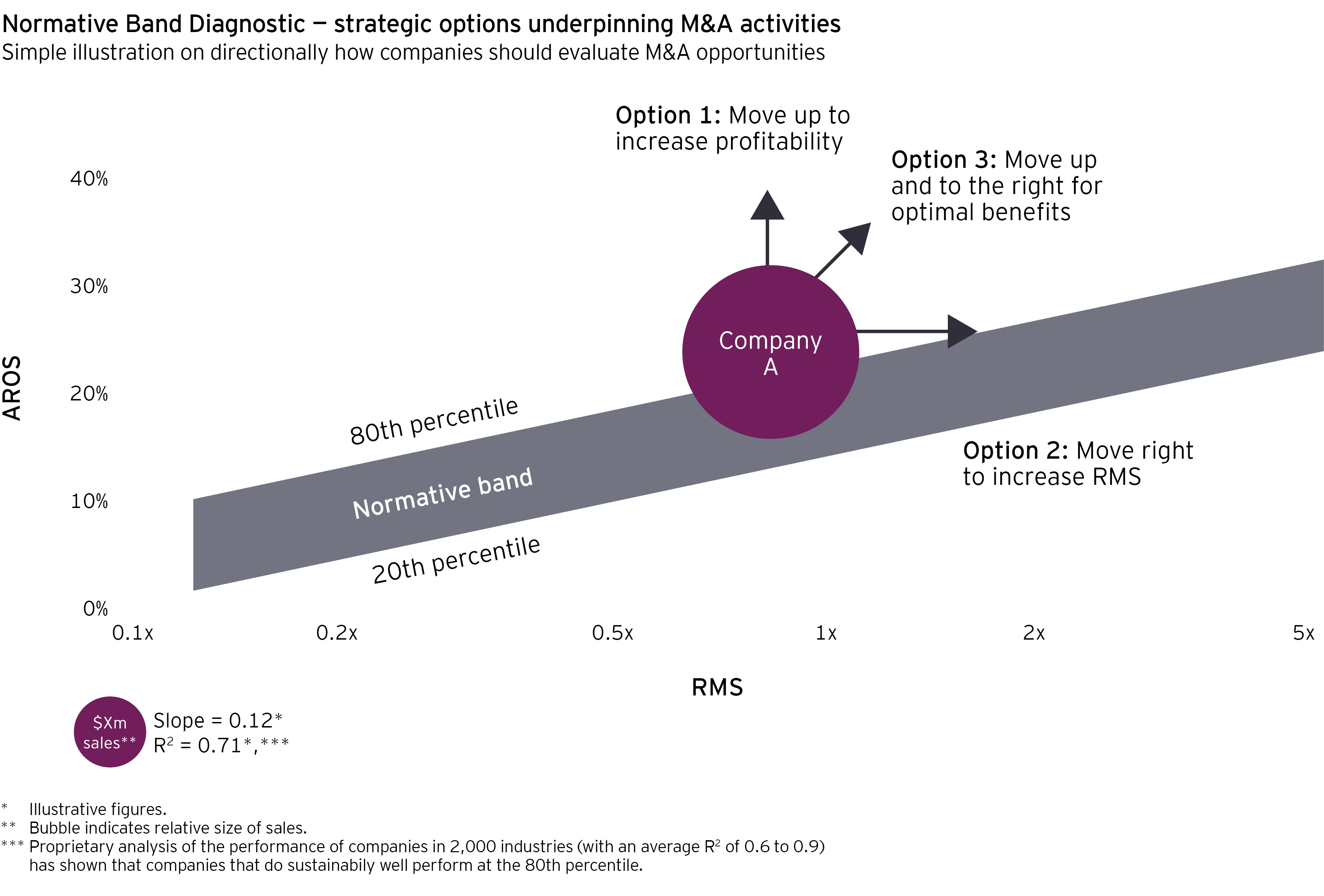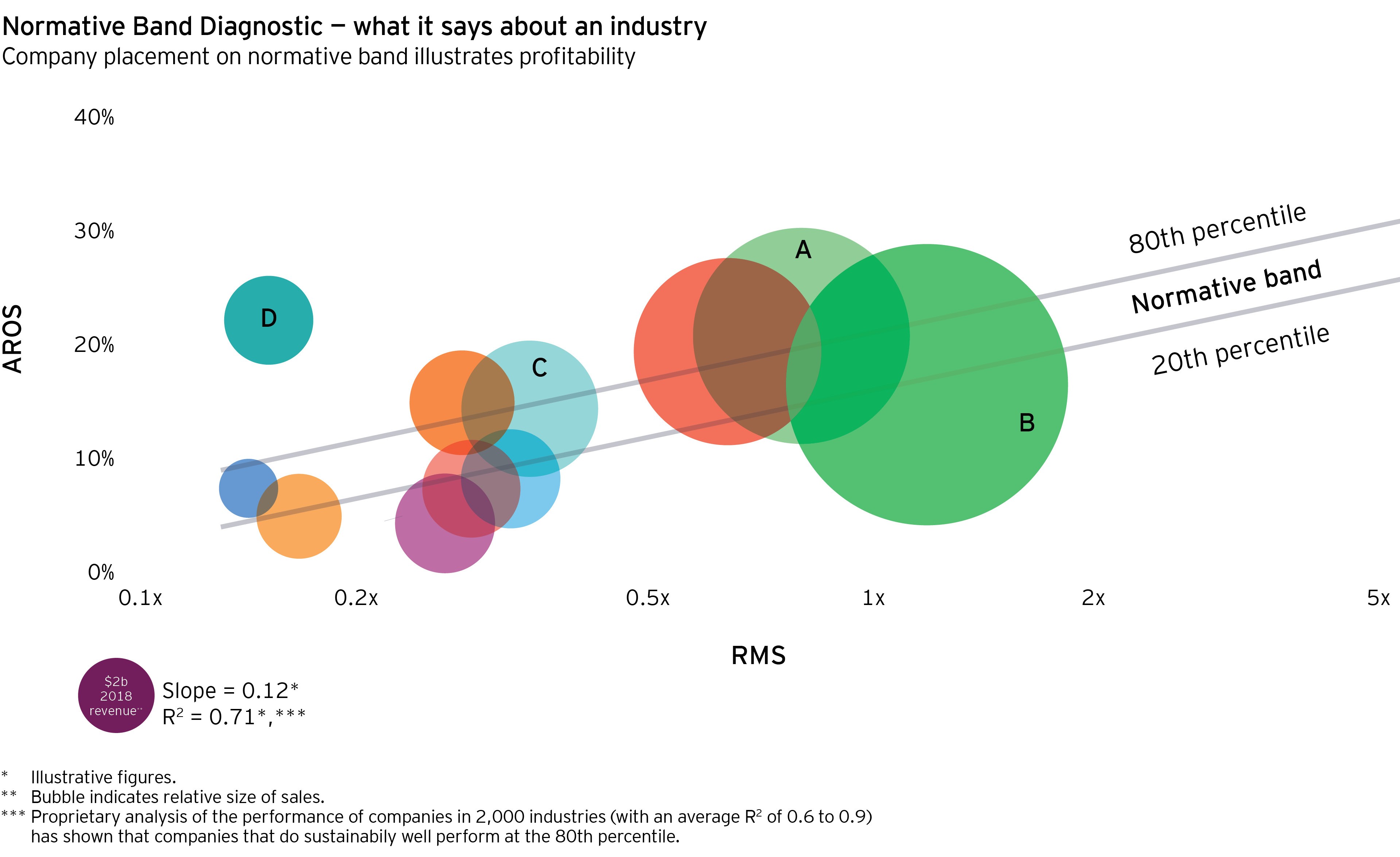Using market context to illuminate profitable M&A growth opportunities
Once the market context is set and you have defined your own business and competitive positioning, the next step in the FPP construct is to calculate the relative market share (RMS), one of the best predictors of long-term growth and profit potential. RMS growth drives actual profitability. It is certainly more complex in calculation than standard market share (SMS) because it indexes the end market sales of a company’s competitive set through a geometric mean calculation.1
RMS provides additional insight into the competitive market that SMS lacks. Why is this so important? A growth strategy that is solely focused on increasing revenue is not sustainable. For a properly defined business (based on the market context analysis), profitability is driven by RMS. Companies with high RMS should, with all else being equal, earn more than those with lower RMS. This, in fact, debunks the notion that companies may be “too big to grow.” A high RMS does not limit revenue growth.
To visualize the power of RMS in setting a growth strategy, a diagnostic from our FPP construct is shown below. Here, we set the RMS against the adjusted return on sales (AROS) to help clients establish growth goals around defined margin targets. In addition, we evaluate specific M&A opportunities to reach these goals.



